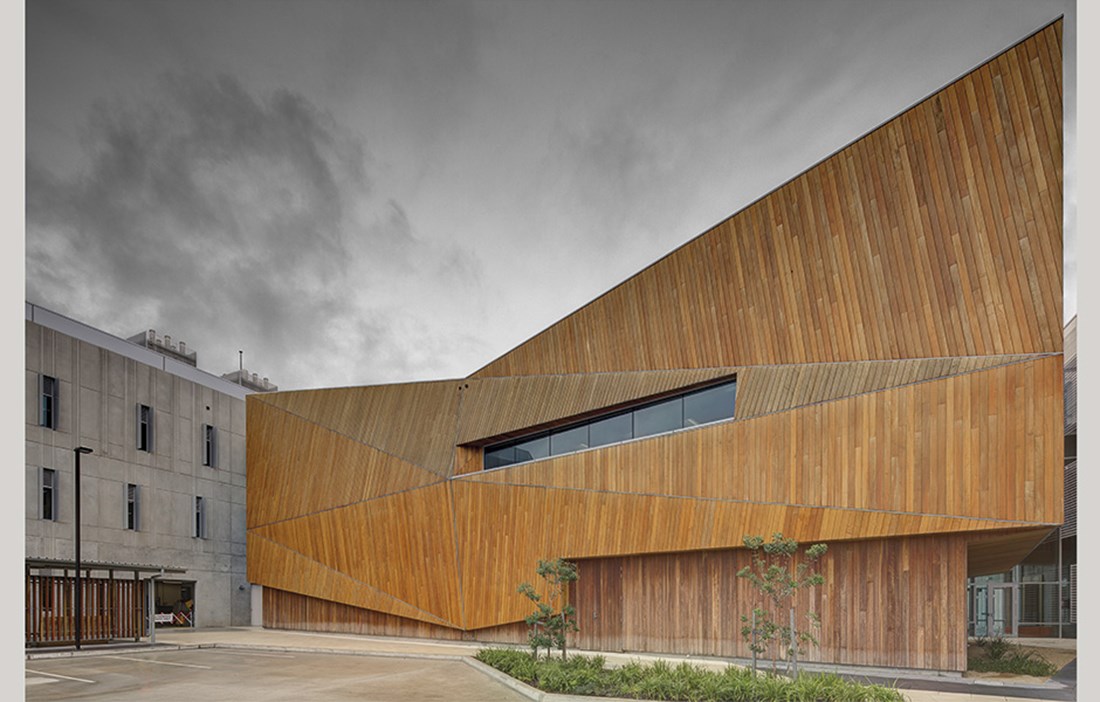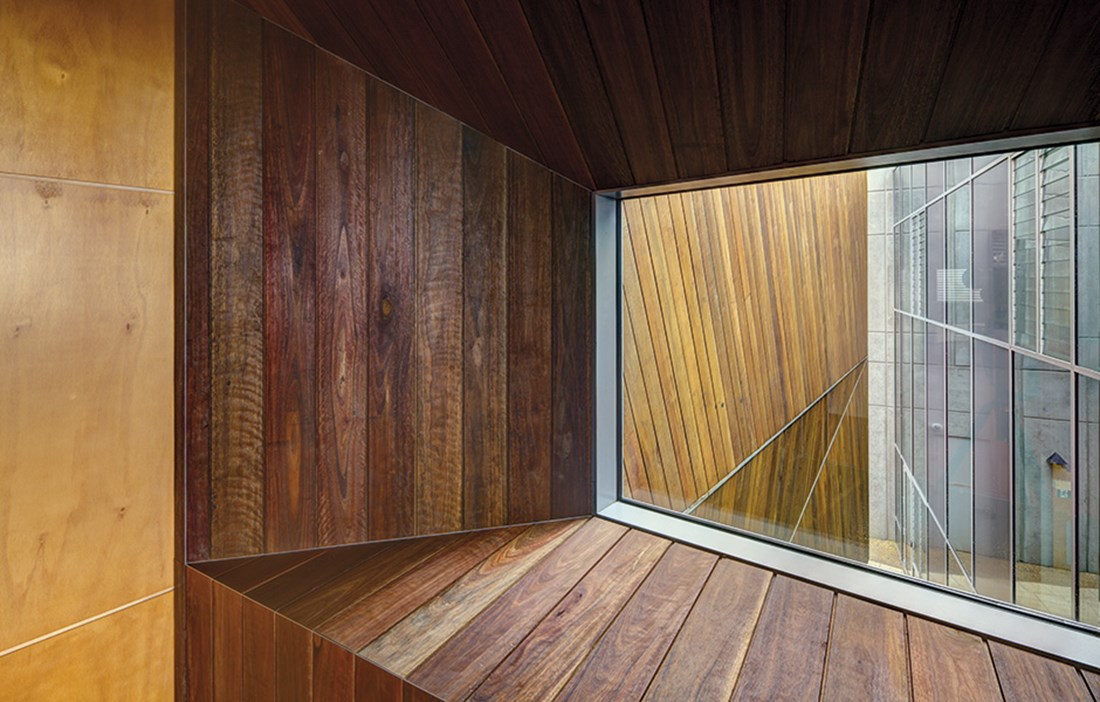THE NEXT INDUSTRIAL revolution is right around the corner. Nanotechnology is a hot research area and many are hoping that the results of the studies will change the world we live in. Influencing products all the way down to molecular level offers the prospect of new, almost unlimited, opportunities to create products with superior properties.
Within healthcare in particular, there are great hopes that in the future the miniscule nanoparticles may be used in the treatment of serious diseases. At the same time, however, little is really known about the particles and their potential harmful effects. A great deal of research is therefore being put into unlocking the secrets of the nanoparticles and how best to build smart structures with atoms.
Inspiration is often taken from nature – the shimmering wings of a butterfly or a snail shell provide ideas on how atoms can be ingeniously arranged to produce different properties.
One of the latest laboratories to be built for nanoresearch is the Electron Microscopy Centre (EMC) at the University of Wollongong’s Innovation Campus (iC) in Australia. The beautiful wooden building is the centrepiece of the university’s Innovation Campus, bringing together the research buildings for the Australian Institute for Innovative Materials (AIIM) and its Processing & Devices facility (P&D). It is here that two of the university’s most important research teams are based: the Intelligent Polymer Research Institute (IPRI) and the Institute for Superconducting and Electronic Materials (ISEM). Before the new building was constructed, the university’s various microscopes were held in a number of older research buildings across the site. However, these buildings were no longer suitable for the type of research being conducted.
“The purpose of the EMC building is to increase the accuracy of our microscopes, and to optimise what we get out of them. It was therefore essential to create an environment that was able to meet the high standards that such research requires,” explains Gary Hudson, iC Project Manager at the University of Wollongong.
THE ARCHITECTS AT SKM-S2F had previously worked on another research building at the university – with an excellent outcome. SKM-S2F was therefore contacted again when the plan was made to build the EMC.
“We got the job because we have extensive experience in constructing complex buildings that have to meet high technical standards. We are also passionate about finding alternative ways to build innovative workspaces for technical projects,” says Clinton Murray, Practice Leader of Architecture and Interiors at SKM-S2F.
The sensitive electron microscopes used at the EMC require an environment where external factors can be more or less eliminated. Dust, vibrations, sound and temperature changes are some of the variables that need to be reduced as far as possible. In addition, the microscopes are extremely sensitive to magnetism. Although metal was permissible for details such as screws and other fixings, none of the longer connecting parts of the building structure could be metal. A metal structure was therefore ruled out, because it would create electromagnetic fields and interfere with the microscopes. This was one of the most important criteria and a challenge for the architects. The solution: wood.
“The fact that we couldn’t use a metal structure gave us an opportunity to develop a building with a wooden frame instead. As it is difficult to source sufficiently long sections of solid wood, the structure comprises several small lengths of laminated timber,” says Clinton Murray.
The wood used for the building, both internally and externally, is Australian Spotted Gum and Pacific Teak. Pacific Teak is particularly hard-wearing, making it able to handle all the climatic challenges that the building is subjected to on the coastal site of the university’s Innovation Campus. Clinton Murray already has considerable experience in working with wood.
“I’ve worked a lot with wood in the residential projects I’ve designed. If I can, I try to use recycled timber. In the majority of buildings, I prefer to leave the wood untreated, because it actually doesn’t need treating, but in this particular case the university required us to apply some sort of external protection. That’s why we painted it with a treatment that has to be repeated every three or four years,” says Clinton Murray.
“One of the differences between working with an institute or university and a residential building is that the architect generally has a more relaxed relationship with someone who owns a home. They trust more in the architect’s judgement, for example when you say that it doesn’t matter if the wood greys over time, it will still last perfectly well.”
THERE IS OF COURSE MORE TO WOOD than the important property of not being magnetic. Irrespective of how sensitive the research at the EMC is, aesthetics were also important, for both the university and the architects. The Innovation Campus is beautifully situated 500 m from the beach, and the wood cladding on the research building bestows a relaxed coastal feel.
“The aesthetic was extremely important. We wanted people to be interested in the building, to be drawn to it, prompting them to think and sparking conversations about what goes on inside. At the same time, we wanted the wood facade to have some kind of connection with the research. Since nanoresearch is about studying the world’s very tiniest details, the notion of ‘details’ became key when building the facade. Moving inside, the structure, colour and even the scent of the wood also create a pleasing and vibrant contrast to the stainless steel of the laboratories,” says Clinton Murray.
The building’s coastal location is also brought into the building – through the ventilation.
“We wanted people in the building to feel the proximity to the sea, and even the smell of the ocean. We therefore let the air that circulates around the rooms where the electron microscopes are housed enter through entirely natural ventilation,” says Clinton Murray.
The building comprises two levels that join up with the neighbouring research buildings. On the ground floor, polished concrete in geometric patterns make up the flooring. To give them as much stability as possible, the electron microscopes are placed in the concrete rooms here on the ground floor. To further reinforce the stability (the building is constantly subjected to vibrations from the Pacific Ocean, trains and other traffic), the building rests on 20 m long concrete piles dug into the ground. The second level is a kind of bridge within the building. A red linoleum floor winds its way over the bridge, creating a zone for social interaction and accidental meetings, while also setting the scene for a collaborative academic environment.
The EMC was completed in May 2011, after which it took nine months to install all the research equipment. The EMC was thus ready for use in early 2012. In 2011, the building won Australia’s prestigious People’s Choice Award at the Timber Design Awards.
“The whole team is so proud of that award. It shows that our hard work and strong conviction are appreciated by others. We hope the award will lead to more, larger projects in Australia being constructed in wood,” says Clinton Murray.
The university is also very pleased with the building.
“The EMC is a unique building, created to meet the tough technical specifications that the electron microscopes require. The project has been a great success, exceeding the university’s expectations. The building is also visually striking. Other universities and research institutes have contacted us to learn from our experiences during the planning and construction of the building,” states Gary Hudson.
Before this project, Clinton Murray and SKM-S2F had never built something in wood to such high specifications. He too is happy with the end result.
“I think it turned out really well. As more people have their eyes opened to the sustainability of wood and discover its fantastic properties, we’re naturally hopeful of a boom time for the material. The best thing is that it’s a living material. You can see it age just like people do. However, there is one important difference, with wood lasting longer than humans. Wood remains, while we people slowly fade away. I think there’s something beautiful about that,” concludes Clinton Murray.
Text Erik Bredhe























